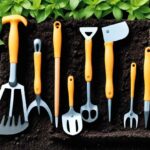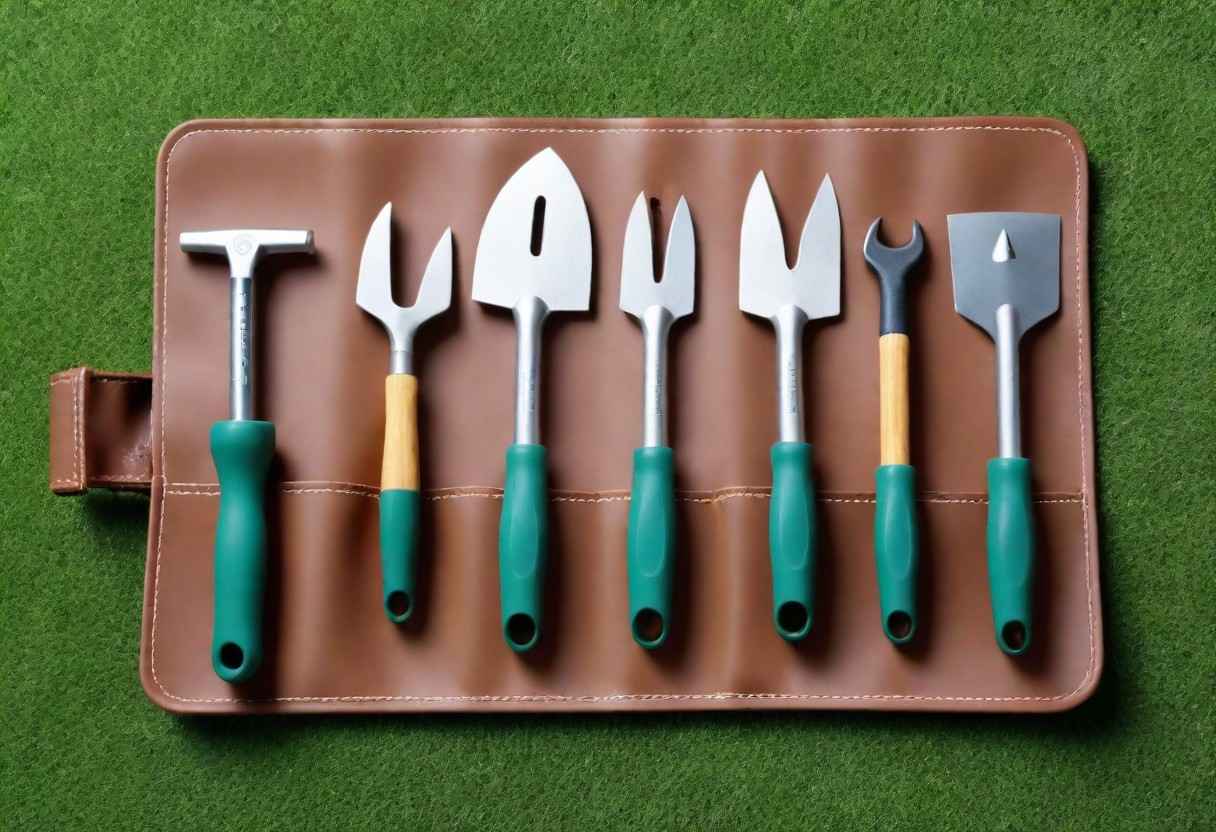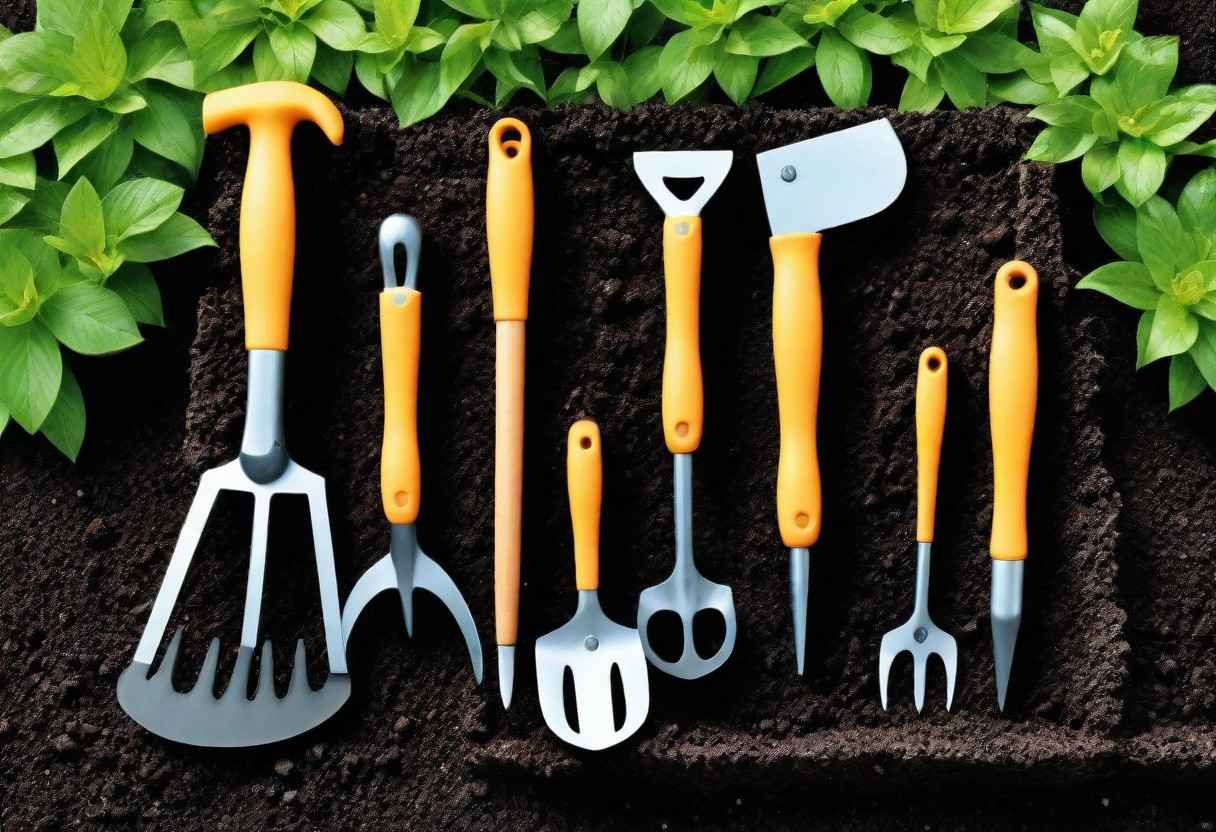Gardening is a rewarding and fulfilling hobby that requires the right tools to be successful. One essential tool that every gardener should have is a tool belt. A tool belt not only helps you keep your gardening tools organized and easily accessible, but it also allows you to have your hands free while you work. In this ultimate guide, we will explore everything you need to know about choosing the perfect Tool Belt for Gardening.

Image Source: Unsplash
Importance of using a Tool Belt for Gardening
A tool belt is an indispensable accessory for any gardener. It provides convenience and efficiency by keeping all your essential tools within arm’s reach. Instead of constantly searching for the right tool or having to carry it around, a tool belt allows you to have everything you need right by your side. This not only saves time but also prevents unnecessary strain on your back and arms.
Moreover, a Tool Belt for Gardening helps you stay organized. With dedicated pockets and compartments, you can easily sort and arrange your gardening tools. This ensures that you can quickly find the tool you need without any hassle. By having your tools organized, you can focus more on the task at hand and maximize your productivity.
Types of gardening tool belts
When it comes to Tool Belt for Gardening, there are various types to choose from. The most common types include waist tool belts, shoulder tool belts, and apron tool belts.
1. Waist Tool Belts: Waist tool belts are the classic choice for gardeners. They are worn around the waist and typically feature multiple pockets and slots for tools. This type of tool belt provides easy access to your tools and allows for a wide range of movement.
2. Shoulder Tool Belts: Shoulder tool belts are worn across the shoulder and chest. They are ideal for gardeners who prefer to evenly distribute the weight of their tools. Shoulder tool belts often have adjustable straps and additional padding, providing extra comfort during long gardening sessions.
3. Apron Tool Belts: Apron tool belts are worn like an apron, with the pockets located on the front. They are a popular choice for gardeners who want quick and easy access to their tools. Apron tool belts are particularly useful for tasks that require constant tool switching, such as planting or pruning.
Before choosing a specific type of tool belt, consider your personal preferences and the type of gardening work you do. Each type has its advantages, so choose the one that suits your needs best.
Factors to consider when choosing a Tool Belt for Gardening
Now that you are familiar with the different types of Tool Belt for Gardening, let’s explore the factors you should consider when choosing the perfect tool belt for your gardening needs.
1. Size and Fit: It is crucial to choose a tool belt that fits you well. A tool belt that is too loose may slide around while you work, while one that is too tight may restrict your movement. Look for tool belts with adjustable straps or waistbands to ensure a proper fit.
2. Material: The material of the tool belt determines its durability and comfort. Look for tool belts made of sturdy and water-resistant materials like nylon or canvas. These materials are not only long-lasting but also provide protection against the elements.
3. Number of Pockets and Compartments: Consider the number and size of pockets and compartments your gardening tool belt should have. This will depend on the number of tools you typically use and prefer to carry with you. Having enough pockets and compartments will ensure that all your tools have a dedicated space.
4. Weight Distribution: If you anticipate carrying heavy tools, consider a tool belt that evenly distributes the weight across your waist or shoulders. This will prevent strain and discomfort during long gardening sessions.
5. Quality and Brand Reputation: Investing in a high-quality tool belt from a reputable brand is essential. Quality tool belts are more durable and will withstand the rigors of gardening. Additionally, reputable brands often provide warranties or guarantees, giving you peace of mind with your purchase.
By considering these factors, you can narrow down your options and choose a tool belt that meets your specific requirements.
Popular gardening tool belt brands
When it comes to gardening tool belts, there are several reputable brands known for their quality and functionality. Here are some popular gardening tool belt brands to consider:
1. Fiskars: Fiskars is a well-known brand in the gardening industry, offering a range of high-quality gardening tools and accessories. Their tool belts are designed with durability and comfort in mind, making them a popular choice among gardeners.
2. The Original Pink Box: The Original Pink Box specializes in creating stylish and functional tool belts and accessories for women. Their tool belts are not only practical but also feature a fashionable design, catering to the needs and preferences of female gardeners.
3. DEWALT: DEWALT is a trusted brand known for its reliable and durable tools. Their tool belts are no exception, offering excellent craftsmanship and functionality. DEWALT tool belts are designed to withstand heavy use and are a popular choice among professional gardeners.
These are just a few examples of the many gardening tool belt brands available in the market. Do your research, read reviews, and choose a brand that aligns with your needs and preferences.
How to properly wear and adjust a gardening tool belt
Wearing and adjusting a gardening tool belt correctly is essential to ensure comfort and functionality. Follow these steps to properly wear and adjust your tool belt:
1. Find the Right Fit: Adjust the straps or waistband of your tool belt to achieve a snug and secure fit. Make sure it sits comfortably on your waist or shoulders without being too tight or loose.
2. Distribute the Weight: If you are using a waist tool belt, distribute the weight of your tools evenly around your waist. If you are using a shoulder tool belt, adjust the straps to evenly distribute the weight across your shoulders and chest.
3. Arrange your Tools: Organize your tools in the pockets and compartments of your tool belt. Place frequently used tools in easily accessible pockets, while less frequently used tools can be stored in larger compartments.
4. Test the Mobility: Move around and perform some gardening tasks to ensure that your tool belt does not hinder your movement. Make any necessary adjustments to the straps or waistband to improve mobility and comfort.
By following these steps, you can ensure that your tool belt is properly worn and adjusted, allowing you to work efficiently and comfortably.
Essential tools to include in a gardening tool belt
Now that you have chosen the perfect tool belt and know how to wear it correctly, it’s time to determine which tools to include. While the specific tools may vary depending on your gardening tasks and preferences, here are some essential tools to consider including in your gardening tool belt:
1. Hand Trowel: A hand trowel is a versatile tool used for digging, planting, and transplanting. It is a must-have tool for any gardener and should have a dedicated pocket in your tool belt.
2. Pruning Shears: Pruning shears are essential for trimming and shaping plants. Choose a pair that fits comfortably in your tool belt and has a secure closure to prevent accidents.
3. Garden Knife: A garden knife is useful for various tasks such as cutting twine, opening bags, or removing weeds. Look for a compact and sturdy garden knife that can be safely stored in your tool belt.
4. Garden Gloves: Protecting your hands is crucial while gardening. Keep a pair of garden gloves in your tool belt to ensure you have them readily available whenever needed.
5. Plant Markers: Plant markers are helpful for labeling different plants or seedlings. These can be easily stored in a small pocket or attached to your tool belt with a clip.
These are just a few examples of the essential tools that should be included in your gardening tool belt. Customize your tool belt based on your gardening tasks and preferences to ensure you have all the necessary tools at hand.
Maintenance and care for gardening tool belts
To ensure the longevity and functionality of your gardening tool belt, proper maintenance and care are essential. Here are some tips to keep your tool belt in great condition:
1. Regular Cleaning: Clean your tool belt regularly to remove dirt, debris, and any plant residues. Use a damp cloth or brush to gently wipe the surface of the tool belt. Avoid using harsh chemicals or submerging it in water, as this can damage the material.
2. Drying: After cleaning, allow your tool belt to air dry thoroughly before storing it. Avoid exposing it to direct sunlight or using artificial heat sources, as this can cause the material to weaken or warp.
3. Storage: When not in use, store your tool belt in a cool and dry place. Avoid storing it in damp or humid areas, as this can promote mold or mildew growth. Hang it or lay it flat to prevent any deformation.
4. Inspect for Damage: Regularly inspect your tool belt for any signs of wear or damage. Check the stitching, straps, and pockets for any tears or loose threads. Repair or replace any damaged parts promptly to maintain the functionality of your tool belt.
By following these maintenance tips, you can ensure that your gardening tool belt remains in excellent condition, ready for your next gardening adventure.
Alternatives to gardening tool belts
While tool belts are a popular choice for gardeners, they may not be suitable for everyone. If you prefer not to wear a tool belt or are looking for alternative options, here are a few alternatives to consider:
1. Tool Caddy or Bucket: A tool caddy or bucket is a practical alternative to a tool belt. It allows you to carry your tools in a portable container, providing easy access and organization. Look for a tool caddy or bucket with compartments to keep your tools neatly arranged.
2. Tool Vest: A tool vest is similar to a tool belt but is worn like a vest with multiple pockets for tools. It distributes the weight evenly across your upper body, providing comfort and mobility.
3. Tool Cart or Wagon: If you have a large garden or need to transport a significant number of tools, a tool cart or wagon can be a convenient option. These wheeled devices allow you to transport your tools easily and provide ample storage space.
Consider these alternatives based on your gardening needs and personal preferences. The key is to choose a solution that allows you to have your tools organized and easily accessible while working in the garden.
Read more about Top 10 Best Gardening Tool Brands You Should Use
Conclusion: Finding the perfect Tool Belt for Gardening
Choosing the perfect tool belt for gardening can greatly enhance your gardening experience. Whether you opt for a waist tool belt, shoulder tool belt, or apron tool belt, make sure to consider factors such as size and fit, material, number of pockets, weight distribution, and brand reputation. Select a tool belt that suits your needs and preferences, ensuring comfort and functionality.
Remember to properly wear and adjust your Tool Belt for Gardening, allowing for mobility and easy access to your tools. Include essential gardening tools in your tool belt, such as a hand trowel, pruning shears, garden knife, garden gloves, and plant markers. Maintain and care for your tool belt to prolong its lifespan and keep it in excellent condition.
If a tool belt doesn’t suit your preferences, explore alternative options like tool caddies, vests, or carts. Ultimately, the goal is to find a solution that keeps your tools organized, easily accessible, and maximizes your gardening efficiency.
Investing in a high-quality tool belt will undoubtedly enhance your gardening experience and make your gardening tasks more enjoyable. So, take your time, research different options, and choose the perfect Tool Belt for Gardening needs. Happy gardening!






